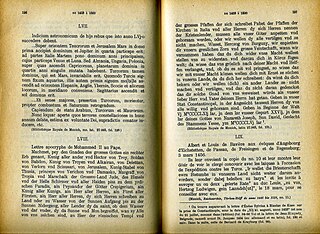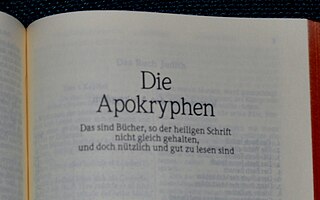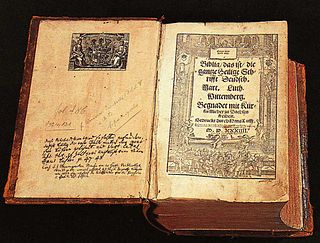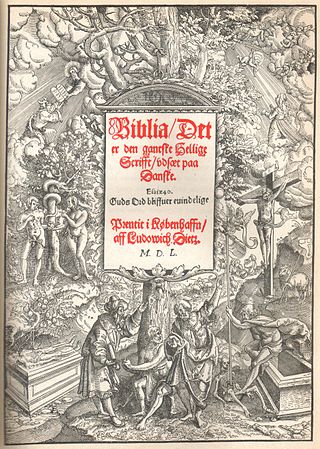Moffatt, New Translation (MNT) is an abbreviation of the title The Holy Bible Containing the Old and New Testaments, a New Translation by James Moffatt.
Moffatt, New Translation (MNT) is an abbreviation of the title The Holy Bible Containing the Old and New Testaments, a New Translation by James Moffatt.
In the introduction to his 1926 edition, Moffatt wrote, "The aim I have endeavoured to keep before my mind in making this translation has been to present the books of the Old and the New Testament in effective, intelligible English. No translation of an ancient classic can be quite intelligible, it is true, unless the reader is sufficiently acquainted with its environment to understand some of its flying allusions and characteristic metaphors. But something may be done and I am convinced, ought to be done at the present day to offer the unlearned a transcript of the Biblical literature as it lies in the light thrown upon it by modern research. The Bible is not always what it seems to those who read it in the great prose of the English version or indeed, in any of the conventional versions. What it is may be partly suggested by a new rendering, such as the following pages present, that is, a fresh translation [1] of the original, not a revision of any English version."
| The Bible in English |
|---|
|
In beginning his work in 1901, he arranged the New Testament into what he perceived to be historical order and provided an original translation of the New Testament, The Historical New Testament. Being the Literature of the New Testament Arranged in the Order of Its Literary Growth and According to the Dates of the Documents. [2]
Moffatt's departed from traditional translations in several areas. Firstly, he held to the documentary hypothesis and printed his Bible in different typefaces according to which author he believed had written each particular section. Secondly, he dated most books hundreds of years later than most theologians did at the time,[ citation needed ] which stemmed from his doubt about the historical accuracy of many of the biblical books (especially in the Old Testament). Finally, he rearranged the biblical texts (usually by switching chapter orders), based on his judgments about the content, authorship, and historicity of the texts. For example, John 14 comes after John 15 and 16 in the Moffatt Bible.
He raised objections from many scholars [3] but proved very popular and started a trend toward more paraphrased translations. [4] His translation was used as a benchmark for accuracy by C. S. Lewis during his research for 'Reflections on the Psalms' (1958), [5] and was utilized by Martin Luther King Jr. for quotations from Philippians in 'Strength to Love' (1963). [6]

Apocrypha are biblical or related writings not forming part of the accepted canon of scripture, some of which might be of doubtful authorship or authenticity. In Christianity, the word apocryphal (ἀπόκρυφος) was first applied to writings that were to be read privately rather than in the public context of church services. Apocrypha were edifying Christian works that were not always initially included as canonical scripture.
The deuterocanonical books, meaning 'of, pertaining to, or constituting a second canon', collectively known as the Deuterocanon (DC), are certain books and passages considered to be canonical books of the Old Testament by the Catholic Church, the Eastern Orthodox Church, the Oriental Orthodox Church, and the Church of the East. In contrast, modern Rabbinic Judaism and Protestants regard the DC as Apocrypha.

The King James Version (KJV), also the King James Bible (KJB) and the Authorized Version (AV), is an Early Modern English translation of the Christian Bible for the Church of England, which was commissioned in 1604 and published in 1611, by sponsorship of King James VI and I. The 80 books of the King James Version include 39 books of the Old Testament, 14 books of Apocrypha, and the 27 books of the New Testament.
The Old Testament (OT) is the first division of the Christian biblical canon, which is based primarily upon the 24 books of the Hebrew Bible, or Tanakh, a collection of ancient religious Hebrew and occasionally Aramaic writings by the Israelites. The second division of Christian Bibles is the New Testament, written in Koine Greek.

The Septuagint, sometimes referred to as the Greek Old Testament or The Translation of the Seventy, and often abbreviated as LXX, is the earliest extant Greek translation of the Hebrew Bible from the original Biblical Hebrew. The full Greek title derives from the story recorded in the Letter of Aristeas to Philocrates that "the laws of the Jews" were translated into the Greek language at the request of Ptolemy II Philadelphus by seventy-two Hebrew translators—six from each of the Twelve Tribes of Israel.

The Matthew Bible, also known as Matthew's Version, was first published in 1537 by John Rogers, under the pseudonym "Thomas Matthew". It combined the New Testament of William Tyndale, and as much of the Old Testament as he had been able to translate before being captured and put to death. Myles Coverdale translated chiefly from German and Latin sources and completed the Old Testament and Biblical apocrypha, except for the Prayer of Manasseh, which was Rogers', into the Coverdale Bible. It is thus a vital link in the main sequence of English Bible translations.

The Bishops' Bible is an English edition of the Bible which was produced under the authority of the established Church of England in 1568. It was substantially revised in 1572, and the 1602 edition was prescribed as the base text for the King James Version that was completed in 1611.
More than 100 complete translations into English languages have been produced. Translations of Biblical books, especially passages read in the Liturgy can be traced back to the late 7th century, including translations into Old and Middle English.
These are the books of the Vulgate along with the names and numbers given them in the Douay–Rheims and King James versions of the Bible. They are all translations, and the Vulgate exists in many forms. There are 76 books in the Clementine edition of the Latin Vulgate, 46 in the Old Testament, 27 in the New Testament, and 3 in the Apocrypha.

The biblical apocrypha denotes the collection of ancient books, some of which are believed by some to be apocryphal, thought to have been written some time between 200 BC and 100 AD.
James Moffatt was a Scottish theologian and graduate of the University of Glasgow.
The Old Testament is the first section of the two-part Christian biblical canon; the second section is the New Testament. The Old Testament includes the books of the Hebrew Bible (Tanakh) or protocanon, and in various Christian denominations also includes deuterocanonical books. Orthodox Christians, Catholics and Protestants use different canons, which differ with respect to the texts that are included in the Old Testament.

The term Catholic Bible can be understood in two ways. More generally, it can refer to a Christian Bible that includes the whole 73-book canon recognized by the Catholic Church, including some of the deuterocanonical books of the Old Testament which are in the Greek Septuagint collection, but which are not present in the Hebrew Masoretic Text collection. More specifically, the term can refer to a version or translation of the Bible which is published with the Catholic Church's approval, in accordance with Catholic canon law. The current official version of the Catholic Church is the Nova Vulgata.
The Common English Bible (CEB) is an English translation of the Bible whose language is intended to be at a comfortable reading level for the majority of English readers. The translation, sponsored by an alliance of American mainline Protestant denomination publishers, was begun in late 2008 and was finished in 2011. It uses gender-inclusive language and some editions sold include the books of the Apocrypha which are used by the Catholic Church, Orthodox Church, and in some Anglican congregations.

Luther's canon is the biblical canon attributed to Martin Luther, which has influenced Protestants since the 16th-century Protestant Reformation. While the Lutheran Confessions specifically did not define a biblical canon, it is widely regarded as the canon of the Lutheran Church. It differs from the 1546 Roman Catholic canon of the Council of Trent in that it rejects the deuterocanonical books and questions the seven New Testament books, called "Luther's Antilegomena", four of which are still ordered last in German-language Luther Bibles to this day.
A biblical canon is a set of texts which a particular Jewish or Christian religious community regards as part of the Bible.

A Protestant Bible is a Christian Bible whose translation or revision was produced by Protestant Christians. Typically translated into a vernacular language, such Bibles comprise 39 books of the Old Testament and 27 books of the New Testament, for a total of 66 books. Some Protestants use Bibles which also include 14 additional books in a section known as the Apocrypha bringing the total to 80 books. This is in contrast with the 73 books of the Catholic Bible, which includes seven deuterocanonical books as a part of the Old Testament. The division between protocanonical and deuterocanonical books is not accepted by all Protestants who simply view books as being canonical or not and therefore classify books found in the Deuterocanon, along with other books, as part of the Apocrypha. Sometimes the term "Protestant Bible" is simply used as a shorthand for a bible which contains only the 66 books of the Old and New Testaments.

Bible translations in Norway date back to the late 13th century. Since the first spread of Christianity in Norway, numerous translations of the Bible have been published. Translations have appeared in several of the official languages that Norway has had throughout its history, including editions in Old Norse, Danish, and both current standard forms Nynorsk and Bokmål.